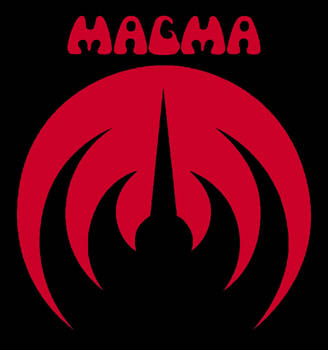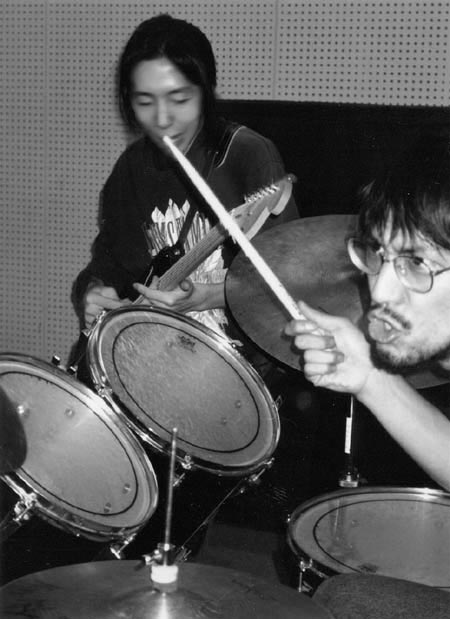As I mentioned in the review, Zeuhl is a genre that got its start in France in the 1970s. At the time, Zeuhl was a bastard hybrid of prog rock, jazz, opera, early heavy metal and chamber music, expressed through fat basslines, driving drum rhythms, horns, strings and vocal acrobatics, usually from at least two different vocalists. The sound was pioneered by Magma, whose album Kobaia debuted an unmistakeable sound, fueled by an almost cult-like devotion to a sound that was bombastic and militaristic, but at the same time primitive and organic.


Magma's output is also notable for how tied they were to the idea of conceptual mythology being intrinsically tied to their music. Roughly 90% of Magma's output between the 1970s and now (their most recent album, Ëmëhntëhtt-Ré came out just last year) focuses on a complex mythology of humans, having fled Earth in the midst of the oncoming apocalypse and arriving on the populated planet Kobaia, where the humans and Kobaians engage in various conflicts over cultural and religious assimilation. Naturally, this epic saga, spread across dozens of songs and releases, are sung in a language created by Magma's key visionary and drummer, Christian Vander. The language (Kobaian), for which a dictionary existed, bears a strong resemblance to German and has been analyzed for years by legions of fans to learn the fate of Earth, Kobaia and the human colonists. Magma still plays live fairly regularly, and several blogs have been set up to share bootlegs of the band throughout their career.
Zeuhl, however, did not simply stay with Magma. Several offshoot bands and projects were founded in Europe in the 1970s and 1980s, including the Magma side projects Univeria Zekt and Weidorje, soundalike bands Eider Stellaire and Dun, and the chamber-music sounds of projects like Univers Zero, Shub Niggurath and Art Zoyd. As of right now, the British band Guapo (especially their albums Black Oni and Five Suns) are the Europe's freshest take on the genre.
Zeuhl managed to catch on outside of Europe as well. Artists from Japan picked up on the style quickly in the 1990s, resulting in several bands such as Happy Family, Koenjihyakkei and perhaps most notably, Ruins. Most often a two-man project helmed by virtuoso drummer and vocalist Yoshida Tatsuya, Ruins brought a fast grindcore element to the Zeuhl sound, which made them popular among the avant-garde metal community. Ruins has released several albums and has collaborated with artists such as jazz guitarist Derek Bailey. Zoo, a relative newcomer to the scene, shows a great deal of promise as a rising Asian Zeuhl band. Hopefully they stick around long enough to see more success and exposure.
Zeuhl never particularly made it in the U.S., which is a shame. Perhaps its militaristic sound was too much initially for the arena-rock tinged U.S. prog scene of the 1970s. The success of bands like The Boredoms and other Japanese noise rockers brought Ruins to U.S. fans fairly painlessly, and the advent of the internet has enabled American fanatics to catch up with Europe and Asia's zeuhl scenes. Perhaps the closest thing we have is the scene of no-wave-meets-prog-meets-hardcore bands such as Hella, The Flying Luttenbachers and a few notable others. It's high time for a US Zeuhl movement to start, however. There's hundreds of us wearing bootleg Magma and Ruins t-shirts that we made with iron-on transfers and our mothers' iron, keeping our ears to the ground for the howling march from beyond.



No comments:
Post a Comment